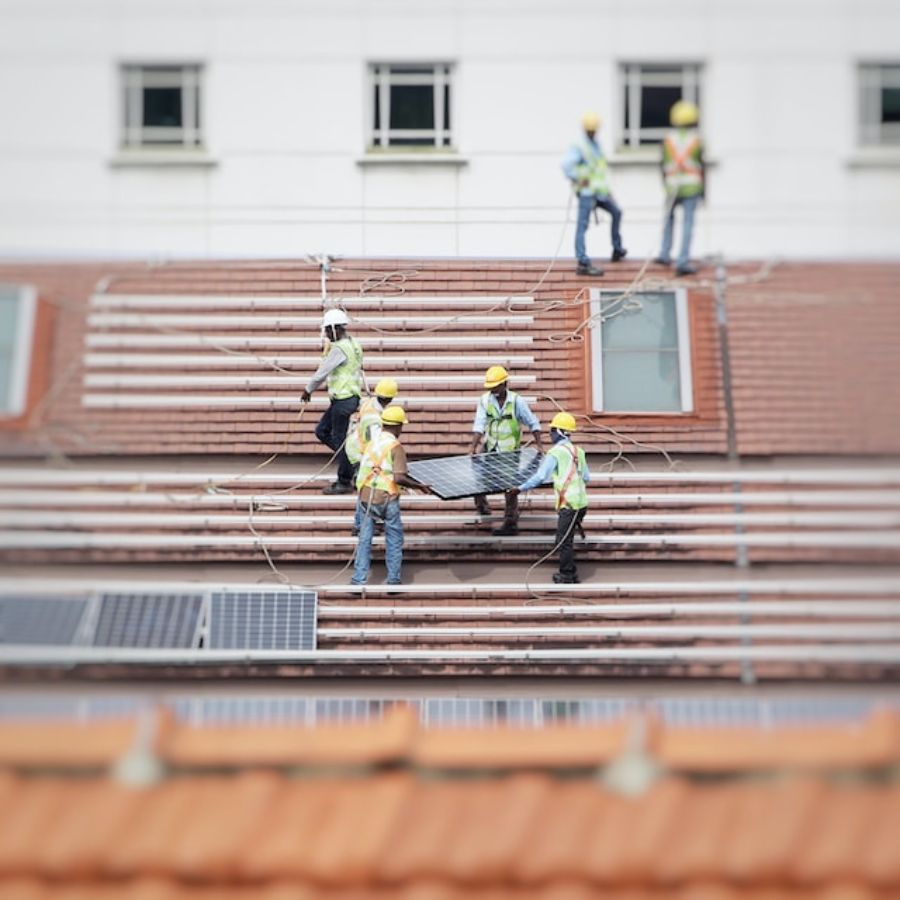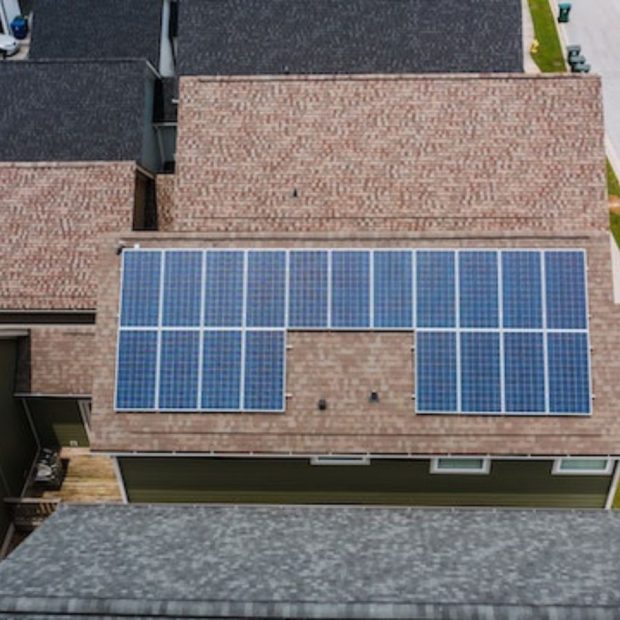How Many Solar Panels For 10Kw
Solar energy has emerged as a viable and sustainable alternative to conventional sources of electricity. As homeowners and businesses increasingly turn to solar power, understanding the requirements for installing a solar system, as well as the price of a solar system, becomes essential.
This article will explore how many solar panels are needed to achieve a 10kW (kilowatt) solar installation. We will explore the factors determining the number of panels required, providing you with a comprehensive understanding of the process.
Understanding Solar Panel Capacity and Efficiency

Before delving into the calculation, it is essential to understand the basics of solar panels. A solar panel’s capacity is measured in kilowatts (kW) and refers to the amount of electricity it can generate under optimal conditions. The capacity of a solar panel depends on its size and the efficiency with which it converts sunlight into electricity.
Solar panel efficiency determines how effectively it converts sunlight into electricity, and the amount of power it generates depends on several factors. Higher-efficiency panels can produce more electricity for a given amount of sunlight. Factors such as the quality of materials used in panel manufacturing and the technologies employed influence efficiency.
Factors Affecting the Number of Solar Panels
The number of solar panels required to achieve a 10kW system depends on several factors:
Solar Panel Wattage
The wattage of each solar panel is a crucial consideration when determining the number of panels needed for a 10kW solar system. For example, if you use standard panels with a wattage of 250W, you would require 40 panels to achieve a total capacity of 10kW. However, the wattage of solar panels can vary, affecting the required number of panels accordingly.
Higher-wattage panels can generate the same power output with fewer panels, optimizing how much roof space is necessary for installation. To ensure accurate calculations and the best results, it is advisable to consult with professional solar system installers who are well-versed in solar technology and can provide guidance on the most efficient solar systems.
Sunlight Availability
The sunlight your location receives is crucial when determining how many solar panels are necessary for a 10kW solar system. Regions with ample sunlight require fewer panels than areas with less solar exposure. Factors such as latitude, weather patterns, and potential obstructions like buildings or trees that may cast shadows on the panels influence the availability of sunlight.
Understanding the sunlight availability in your location is essential for estimating the number of solar panels required to generate the desired amount of electricity. By assessing the local climate and considering any potential shading issues, you can optimize the installation of your solar system. Further, this ensures that your 10kW solar system can maximize sunlight absorption and generate sufficient electricity.
When installing solar panels, it is best to consult with professionals with expertise in determining the optimal panel arrangement. Also, consult the placement for your specific location and requirements. Their knowledge and experience will help you install the correct number of panels for your 10kW solar system. In addition, it enables you to generate the desired amount of electricity efficiently.
Panel Orientation and Tilt
The orientation and tilt of solar panels play a significant role in their efficiency and the amount of solar electricity they can generate. For optimal performance, panels should ideally face south (in the northern hemisphere) or north (in the southern hemisphere). Moreover, tilt them at an angle that maximizes sunlight absorption.
A suboptimal orientation or tilt may result in reduced efficiency, potentially necessitating the installation of additional panels to compensate for the decrease in output. Some advanced solar systems incorporate solar tracking technology, enabling panels to follow the sun’s movement throughout the day, enhancing overall power production.
Considering the orientation and tilt of panels is essential when designing solar systems to maximize energy usage and ensure the best return on solar investment. Professional solar system installers can offer expertise in panel positioning and help you optimize the orientation and tilt of your panels for optimal solar power generation.
Climate and Weather
A region’s climate and weather conditions notably impact the performance of a solar panel array. Areas with extreme temperatures or frequent cloud cover may require additional panels to compensate for potential power losses. Cold temperatures can enhance panel efficiency, while excessive heat can diminish it. Moreover, cloudy or overcast weather conditions can decrease the amount of available sunlight, affecting the overall output of a solar panel system.
When designing a solar panel system, considering the climate and weather patterns specific to your location is essential. By understanding these factors, you can determine whether adjustments like using monocrystalline solar panels or installing a few extra panels are necessary. They help to achieve the desired power output. Professional solar installers can guide you in optimizing your system to accommodate your area’s unique climate and weather conditions. It helps ensure efficient energy production and maximize solar power’s benefits.
System Efficiency and Losses
When determining the number of solar panels needed for a 10kW solar system, it’s essential to consider factors beyond panel efficiency. Energy conversion, wiring, and equipment inefficiencies can result in losses within the system.
Accounting for these losses is crucial to accurately calculate how much electricity the system will generate and determine the required solar panels. By factoring in these losses, you can optimize the system design. You can also ensure that you install the appropriate number of panels for your 10kW solar system, achieving the desired energy output using fewer solar panels.
Calculating the Number of Solar Panels
To calculate the number of solar panels required for a 10kW system, follow these steps:
Determine the Average Solar Panel Wattage
To calculate the number of solar panels needed for a 10kW solar system, divide the total system capacity (10,000W) by the average wattage of the panels you plan to use. For example, if you opt for 250W panels, the calculation would be 10,000W ÷ 250W = 40 panels. This calculation allows you to determine the required panels based on the desired system capacity. By selecting panels with the appropriate wattage, you can ensure that your 10kW solar system generates the necessary energy and has the power output required to meet your energy needs.
Adjust for Efficiency and Other Factors
Multiply the number of panels obtained in the previous step by a factor that accounts for efficiency, sunlight availability, panel orientation, climate conditions, system losses, and the desired amount of energy. This factor typically ranges between 1.1 and 1.5. For example, if we use a factor of 1.3, the calculation would be 40 panels × 1.3 = 52 panels.
It’s important to note that these calculations provide a general estimate for a 10kW solar system. The number of panels needed may vary depending on the required energy, specific location conditions, and solar panel efficiency. Besides, considering all these factors, you can determine the optimal number of panels required to generate the desired energy output from your 10kW solar system. Consulting with professional solar installers can provide valuable insights. In addition, it helps you accurately assess your energy needs and design a system that meets your requirements.
Conclusion
Several factors come into play when determining the number of solar panels required for a 10kW system. Solar panel wattage, sunlight availability, panel orientation, climate conditions, and system efficiency all influence the final count. By calculating the average wattage and adjusting for efficiency and other factors, you can arrive at a more accurate estimate for your specific location. Considering these variables, consulting with a professional solar installer or using online solar calculators is best.
Embracing solar energy helps reduce electricity costs and contributes to a cleaner and more sustainable future. Furthermore, you can make informed decisions about your solar installation by understanding the factors influencing the number of solar panels needed for a 10kW system. Maximize the benefits of solar power by designing a system that suits your energy needs and optimizes efficiency. It ultimately leads to long-term savings and environmental benefits.


